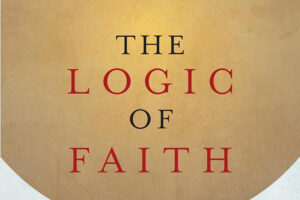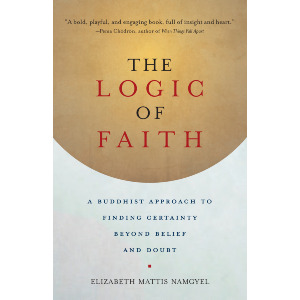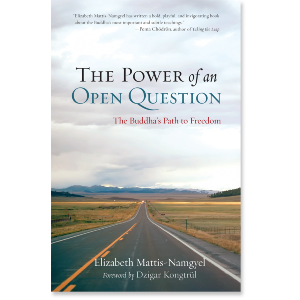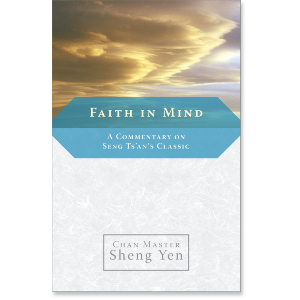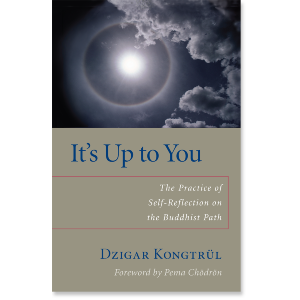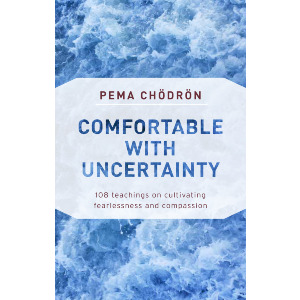This entire book hinges on the word faith. You may assume that you know what that means. You may think that it has a single, clear definition. But words are not definitive structures: one word can have limitless—even opposing—meanings. Language morphs over time, and words take on different meanings depending on their contexts. You’ll likely find as many definitions of faith as there are people to define it. Try asking around.
Just to give you an idea of some of the possible usages for the word faith, look at a standard English dictionary, which will most likely include in the definition such terms as dogma, religion, fundamentalism, doctrine or indoctrination, confidence, trust, conviction, and spiritual insight, to name a few. People make strong statements about faith, such as, “Faith without doubt leads to moral arrogance” or “If you don’t have unwavering faith in God, you will go to hell.” Some people feel that those who claim to have faith are deceiving themselves. These people equate faith with the disempowerment that results from blindly handing over agency to an authority figure. For others, faith describes the highest expression of human consciousness that transports us beyond the petty concerns of mundane life. Upon reflection you may notice that you use the term faith in various ways. But notice too that these varied usages have one thing in common: they reflect the desire to find ease in a world you can’t secure.
Upon reflection you may notice that you use the term faith in various ways. But notice too that these varied usages have one thing in common: they reflect the desire to find ease in a world you can’t secure.
Do you think it would even be possible to live in the world without faith? Because we rely on life around us, it seems to me we have no choice but to have faith. The late Buddhist teacher Thinley Norbu Rinpoche linked faith to the nature of existence when he said, “Cows have faith in grass.” This statement may seem simplistic at first glance, but it has deep implications. You cannot remove faith from the equation of your earthbound relative condition. That you depend on the world in which you live keeps you living in faith, and there is no way around it. Given the multiplicity of definitions one finds around faith and given how crucial it is to our very existence, faith is worthy of deep consideration.
The End of Faith?
At some point, after an extended period of exploring faith through personal practice and study, I decided to bring my investigation out into the world to see what others thought. I quickly learned that when I described my teaching topic using the word faith, no one was interested. In fact, once, when I was doing an online program on faith, someone wrote in on the chat, “This is just the mentality my grandmother had!” It was as though, by simply uttering the f-word, I had insulted his intelligence. For him faith was something that could only be outdated and backward. I have, by the way, noticed that the f-word does not generally go over well at Buddhist conferences either.
Subsequently, I started to call my inquiry “The F-Word”—and after that everyone wanted to talk. People are drawn to things that have a rebellious flare. And so I did what I had to do in order to draw attention to a topic that I feel is in desperate need of examination.
Subsequently, I started to call my inquiry “The F-Word”—and after that everyone wanted to talk. People are drawn to things that have a rebellious flare. And so I did what I had to do in order to draw attention to a topic that I feel is in desperate need of examination. As spiritual practitioners, scholars, and human beings looking for a sense of ease, it behooves us to reflect on the things that incite discomfort in us or that we don’t understand, rather than simply buying into or rejecting them.
Many contemporary thinkers want to do away with the word faith altogether and replace it with the term spirituality. In his book The End of Faith, Sam Harris links faith to terrorism, and reasonably so. People do unconscionable things in the name of faith. And yet I wonder, can we afford to do away with the word faith altogether? Personally I think that would be way too easy. I’m not saying the word spirituality doesn’t have its use in the English language. But if you are not careful, spirituality can quite easily allow you to bypass the human dilemma, because spirituality can be anything you want it to be, whereas faith will challenge you. It’s not so comfortable. It carries with it the undeniable tension between your search for security and the limits of your ability to know. Faith keeps your spiritual quest relevant and connected to the heart of the human predicament.
My concern also is that by narrowing the definition of faith to blind acceptance or dogma, we risk losing genuine traditions of contemplative wisdom and practice that include faith. The initial function of spirituality emerged from questioning the human condition and also from deep experiences of wonder. The word religion itself, initially meaning to “reconnect,” seems to have come from direct experiences of something larger than just a set of fixed ideas. It marked a return to something essential that we just failed to recognize in the myopia of our everyday lives. How curious that we turn experiences of awe into dogmas and stagnant ideas. That we have come to associate faith with fundamentalism, blindness, and even terrorism gives us something important to look at.
Pratityasamutpada
So how does one look at faith—both as an experience and a cultural narrative—without closing down around dogmas and fixed ideas? I’m glad you asked. In this book I will introduce to you some methods of investigation that will address this very challenge. The basic approach we will take can be traced back to the very moment of the Buddha’s awakening.
When the Buddha attained enlightenment beneath the Bodhi tree in Bodh Gaya, India, he gained insight into the secret of the universe. It was from this insight that he revealed the powerful principle of pratityasamutpada, which is commonly known by its English translation, “dependent arising.” Pratityasamutpada describes how everything we experience—both material and conscious—arises, plays out, and falls away in reliance upon an infinite web of contingent relationships. In other words, it is because things depend that life moves and we can experience it.
For those who study and practice the Buddha’s path, his description of dependent arising has become a fresh and unimpeded way of perceiving mind and its world, and the primary understanding that makes liberation possible. It would be accurate to say that this very insight into the nature of dependent arising was the pivotal revelation of the Buddha, from which all of his subsequent teachings unfolded. It was also the wisdom that my teacher was pointing out to me through his simple gesture years ago.
It is important for me to say, and for you to understand, that although pratityasamutpada comes to us through a formal continuum of Buddhist practice and realization, it is not a dogma or a set of ideas to adhere to. Instead the wisdom of pratityasamutpada functions like a portal into a completely new way of understanding your mind and its world, based on direct experience. It is a powerful insight that you can use as a tool to free yourself from the confusions you have about your place in the world in which you live. I know that sounds like a big promise, but such insight is quite simple and natural, I assure you. In fact, once you step outside your habitual way of seeing things, you will marvel at its obvious truth.
Open Questioning
In the second century, the teachings on pratityasamutpada were revived and energized by the extraordinary spiritual genius Nagarjuna. He designed a series of methodical investigations based upon the Buddha’s insight into the nature of dependent arising that provide a way for whoever employs them to bring together discerning intelligence with a mind of complete openness. The sole purpose of these investigations is to guide us away from the abstract realm of ideas into a direct relationship with life.
There is something important to be said here about the quality of the mind while engaged in a process of inquiry. I have often used the example of “the mind of an open question” to describe it. An open question—as opposed to a question intent on an answer—is one that has not settled on a conclusion or shut down around beliefs or doubts. Rather, when you ask an open question, you remain receptive, humble, and connected to the living and dynamic nature of things. According to this tradition, such characteristics describe a mind poised for insight. In fact, where insight is concerned, it is only an open and attentive mind that is said to perceive its object without mistake.
The purpose for saying all this here is to let you know in advance that I wrote this book as an inquiry, and so it will require some participation and curiosity on your part. In addition to sharing my experience, I will pose many questions for you and introduce several guided investigations that have been passed down by realized Buddhist masters skilled in the ancient art of meditative inquiry. I will invite you to voyage into your own experience of faith because—let’s face it—there is no substitute for the certitude that results from seeing things directly for yourself.
To put it another way, what happens when we look at the world with fresh eyes and an open heart? Furthermore, what does it even mean to look here? How does one look? We will get into that in great depth. But for now, I just want to introduce the idea of dependent arising, pratityasamutpada, as your tool for exploring faith. And I want to make sure that you understand that although the methods used in this book come from the tradition of the Buddha, there is no assertion that insight itself is the possession of any one religion. We are all prone to moments of grace and clear seeing. And so, the term insight, as I use it here in this book, simply serves to describe an inherent potential in all of us.
To put it another way, what happens when we look at the world with fresh eyes and an open heart? Furthermore, what does it even mean to look here? How does one look?
Some of the methods presented in this book may challenge the assumptions you have about language, beliefs, doubts, spirituality, and the nature of knowing. They may bring to the fore some unexamined ideas you have about faith and even prompt you to rethink how you see yourself and the world in which you live. But then what’s an exploration without challenges?
This has been excerpted from The Logic of Faith: A Buddhist Approach to Finding Certainty Beyond Belief and Doubt.
Related Books
$16.95 - Paperback
$19.95 - Paperback
$21.95 - Paperback
$19.95 - Paperback
$17.95 - Paperback



